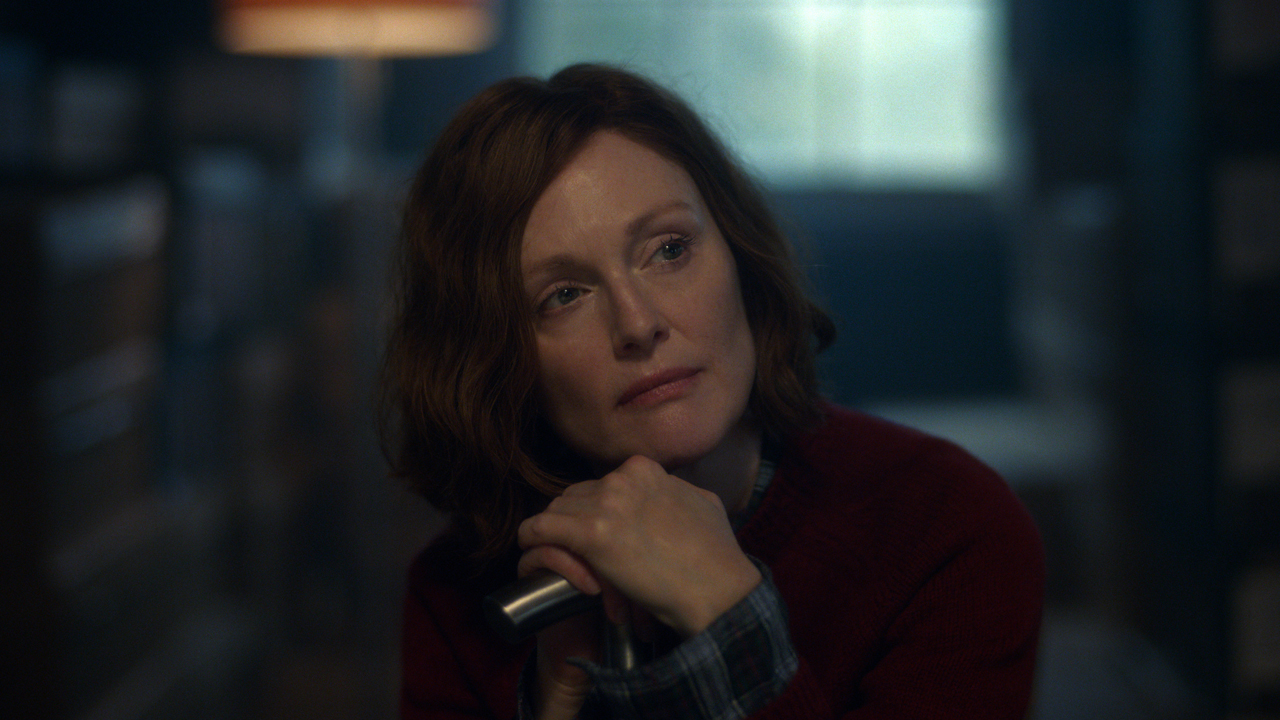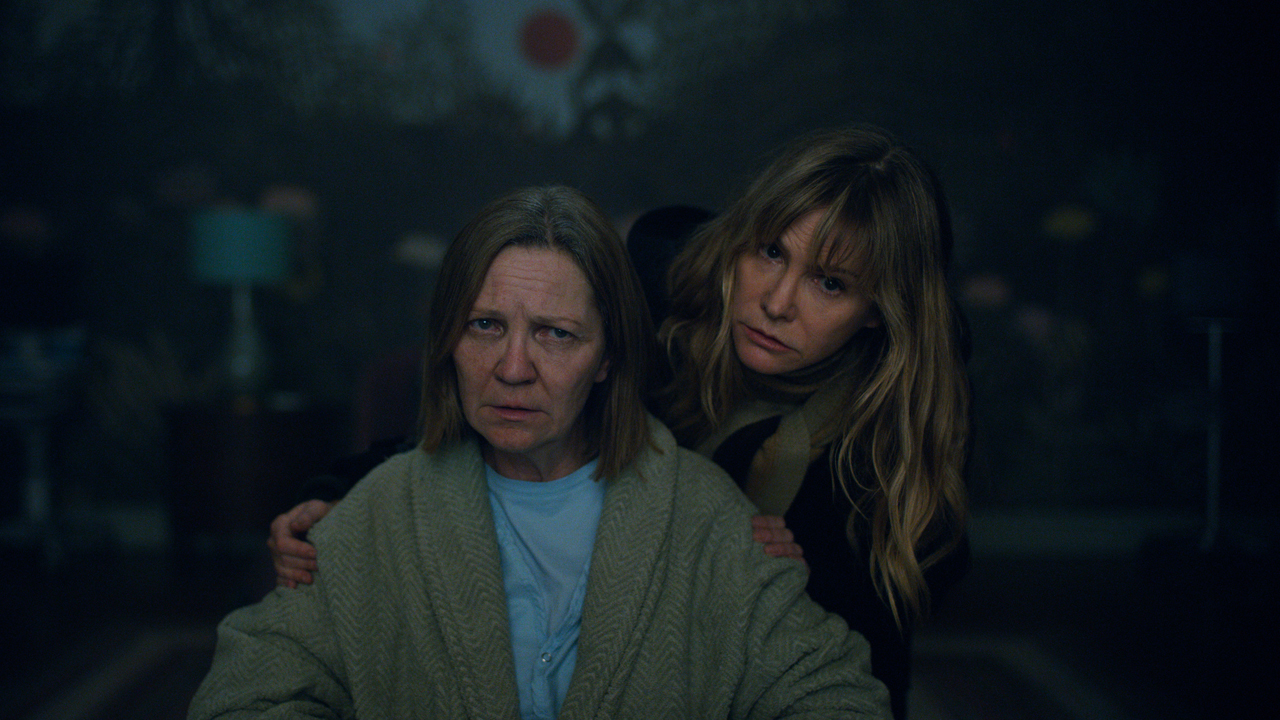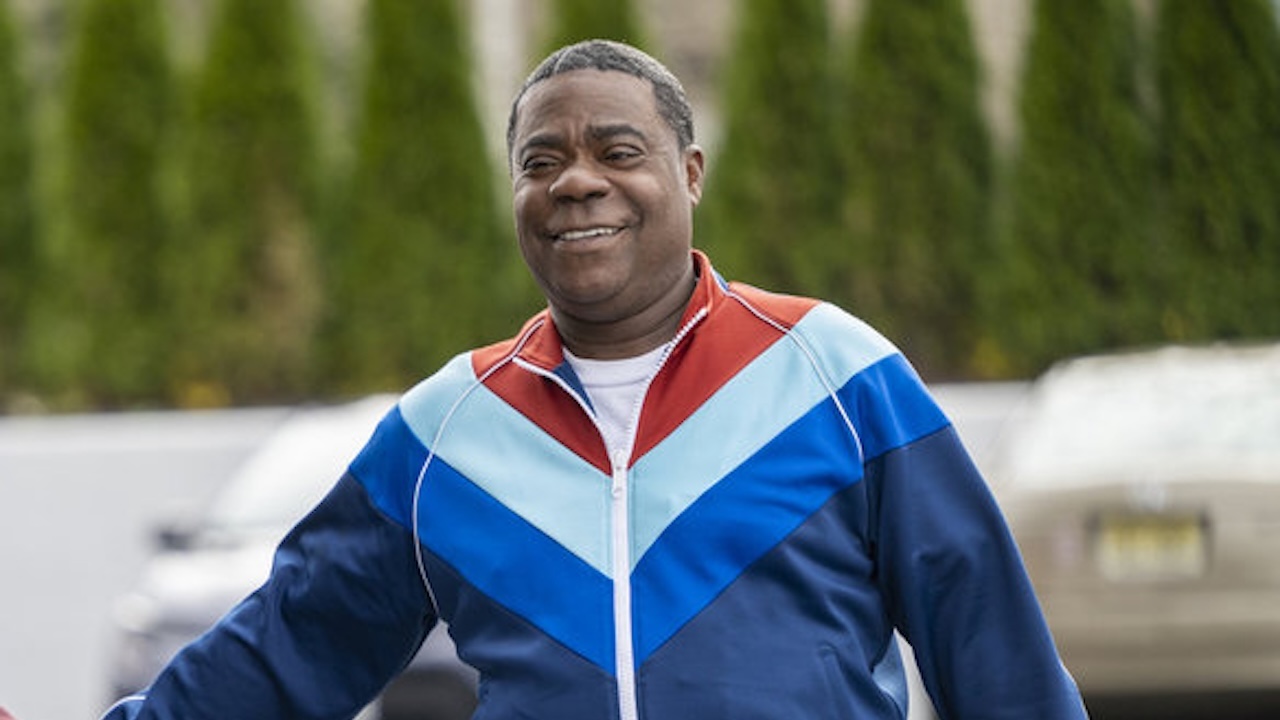Adapting Stephen King's Lisey's Story: The 2021 Apple TV+ Original Is King's Best Self-Adapted Miniseries To Date
Most definitely worth the price of an Apple TV+ subscription.

Many writers will tell you that choosing their favorite title from their own bibliography is akin to asking a parent to identify their favorite child, but Stephen King hasn’t had that problem (despite the fact that he has a lot more titles to choose from than most). He has a group of creations that he views as being special, but he’s also stated that he has a number one.
In 2013, the author took part in an Ask Me Anything session on Reddit, and when asked to name his favorite novel that he’s written, King provided a two word response: “Lisey’s Story.”
At that point, the book was about seven years old, and while it had not been adapted yet, there was good reason: Stephen King made the decision to hold on to the rights so that he could someday adapt it himself. In 2017, as Andy Muschietti’s IT: Chapter One was dominating in theaters, King let his ambitions for the material be known, telling Yahoo! Movies,
I'd like to see Lisey's Story done as a TV miniseries or a limited series. That's one I've held onto because that's one I might try to do myself. I might try to float that project if some of these other things are a success, because I've always loved that book, and I really thought that I got most of that one. And it's kind of overlooked.
Fortunately, IT: Chapter One and other titles in the Stephen King adaptation Class of 2017 did indeed turn out to be hits, and as such the author saw his wish granted. In Spring 2019, it was reported not only that Lisey’s Story was going into development as a streaming series, but that it had found a home on Apple TV+, had Castle Rock/11.22.63’s J.J. Abrams on board as a producer, and was going to star Julianne Moore as the lead (her second King-related project after 2013’s Carrie remake).
Pablo Larraín, who had earned widespread acclaim for his 2016 biopic Jackie starring Natalie Portman, took the helm for all six episodes, and while scheduling plans were impacted by the COVID-19 pandemic in 2020, Lisey’s Story began launching weekly episodes on June 4, 2021.
Despite its incredible ensemble cast, the eight-episode miniseries didn’t inspire a great deal of buzz or attention upon its release – but time should be kind to it, as it is arguably King’s best self-adapted miniseries to date. It has a great number of things going for it, which I’ll dig into in this week’s Adapting Stephen King.

What Lisey's Story Is About
By November 2003, Stephen King had demonstrated remarkable bounce back from the car collision that nearly took his life in 1999. Since the incident, he had published three novels (Dreamcatcher, Black House and From A Buick 8), one short story collection (Everything’s Eventual), and a genius work of non-fiction (On Writing: A Memoir Of The Craft).
Your Daily Blend of Entertainment News
But while the author had certainly recovered from being hit by a van, he wasn’t fully recovered.
As recounted in Bev Vincent’s Stephen King: A Complete Exploration Of His Work, Life, And Influences, King was rehospitalized in late 2003 due to a “serious case of pneumonia” – the sickness attributed to a punctured lung that had failed to heal properly. He remained under the care of doctors for nearly two months – and during that time, Tabitha King, Stephen King’s wife, set about redecorating his home studio.
In a November 2006 interview with Powell’s (published a month after Lisey’s Story hit store shelves), the author explained how his return from the hospital and seeing his studio under construction inspired the book:
When I came back [from the hospital], she said, ‘I wouldn't go in there; it's disturbing.’ So of course I went in there, and it was disturbing. I was still in deep recuperation, and I felt like a ghost anyway. But going in there, I felt even more like a ghost, because the books were all off the shelves, and the furniture had been pulled out because my wife was getting it reupholstered, and the rugs had been rolled up. I thought, ‘This is what this place is going to look like after I die.’
Thinking about his mortality and life moving on after he is gone, Stephen King thought about his relationship with Tabitha – not only the love of his life, but a key collaborator in his career (let’s not forget that she convinced her husband to give Carrie another crack after he had thrown early pages in the trash). He had written Bag Of Bones less than a decade earlier – the story of an author who loses his wife – but he began to contemplate the inverse of that setup: a book centering on a woman living in the aftermath of her successful novelist spouse’s untimely death.
Initially, King saw comedy in the setup, thinking that the story could be an expression of the idiom “behind every great man is a great woman,” but that tonal approach was dismissed as he began to develop the story and think about the character who would become the book’s principal antagonist: Jim Dooley. In August 2006, he told Publisher’s Weekly,
I first thought it was going to be a funny book, about a guy who is going to be a big-shot writer. I wanted to show that his wife got completely ignored, but was the person responsible for all his success. I wanted to have five or six things in the background where she had actually pulled all his chestnuts out of the fire. Then this guy Dooley came on the scene and wanted the writer's manuscripts and the story took a different direction. It got more serious.
With its more dramatic direction in place, Lisey’s Story became a novel about love, grief, memory, and imagination – of course, with a wonderful dose of the supernatural mixed in.
The titular Lisey (pronounced LEE-see) in Lisey’s Story is Lisey Landon, who we meet months after the death of popular author Scott Landon. She holds static in her sorrow, but things start to change when her mentally unstable sister, Amanda, slips into a catatonic state. While helping her sibling, the protagonist discovers a scavenger hunt (referred to as a “bool hunt”) that has been left for her by Scott, and she is led through their history together by following the clues.
As Lisey begins to unearth repressed memories about Scott, stories that he told her about his horrific childhood, and special abilities he exhibited during their relationship, the widow is unfortunately set upon by an external conflict – the aforementioned Jim Dooley. Dooley is a psychotic Scott Landon fan who is obsessed with the idea of recovering unpublished manuscripts that are in Lisey’s possession, and he is willing to go to extreme and terrible lengths to acquire what he wants.

How Pablo Larraín's Lisey's Story Differs From Stephen King's Book
If Stephen King felt that there were major things in Lisey’s Story that needed to be fixed, it probably wouldn’t be his favorite book of those he has written. His appreciation for what was published is evident in his adaptation, though there are certainly elements from the miniseries that stand out as different from the source material.
The most important is a game of subtraction and addition. In the novel, Lisey (Julianne Moore) has a total of four sisters (Amanda, Darla, Jodotha, and Cantata) but given that Jodotha and Cantata barely have a presence in the story, they were clearly very easy for King to excise while working on his teleplays. The plus that comes with that minus is a greatly expanded part for Darla (Jennifer Jason Leigh) to play. The book features Darla as a mostly periphery character who is on the outside rim of the narrative, but the miniseries makes her a much more integral player, joining Lisey and Amanda (Joan Allen) in acceptance of the supernatural and the fight against Jim Dooley (Dane DeHaan).
On the subject of Dooley, there are some tiny little alterations – like his moniker being “Jim Dandy” instead of “Zack McCool,” killing a crow instead of a cat as a message to the widow, and using a pizza slicer instead of a can opener to torture Lisey. However, there are more substantial changes as well. We get to see full scenes from the character’s perspective in the show, and one thing that is driven home with authority is that he is a hardcore misogynist (one who repeats the mantra “No wife; stay single.”) His arc and fate, however, are the same in both versions.
It can also be said that Dooley’s crimes get far worse in the adaptation of Lisey’s Story, as the miniseries commits a homicide: he murders police officer Dan Beckman (Sung Kang). This leads to an invented scene in the finale where a cop infers to Lisey that he isn’t going to be asking too many questions about Dooley’s disappearance, but otherwise only serves to enhance the stakes of the story and show how far the obsessive fan is willing to go in pursuit of the works of Scott Landon (Clive Owen).
One can also point out that Professor Roger Dashmiell (Ron Cephas Jones) is an amalgamation of two characters from the book – Professor Roger Dashmiell and Professor Joseph Woodbody – but really the only other major deviations are in aesthetics. For example, the idea that running water can be used to facilitate a person’s travel to the alternate universe known as Boo’ya Moon. The monstrous Long Boy of that world also has a new look in the Lisey’s Story miniseries, as he goes from being a spotted, eldritch, snake-like creature to being a humanoid giant with a body made up of all the people it has captured and tortured.

Is It Worthy Of The King?
If you’re not a Constant Reader, I can imagine the Lisey’s Story miniseries being a bit challenging to get into, specifically given its non-linear structure and frequent blending of imagination and memory with depicted reality. The style established in both story and direction by Stephen King and Pablo Larraín is unapologetic, as it doesn’t waste time with detail-centric exposition. For this reason, it was perhaps a mistake to give the show a weekly rollout instead of having all episodes made available in a binge model – but in the macro sense, that doesn’t really matter, as all together it is one of the most successful King adaptations and the best miniseries the author has adapted from his own work.
Aesthetically, speaking Lisey’s Story is in its own league, as there is no comparing the lush beauty of the streaming series to network television productions like The Stand and The Shining. Narratively, the runtime real estate of eight 50-60 minute episodes means that the book and more is brought to the big screen, rather than feeling like little bites were taken out over the course of development. It’s a truly complete adaptation, and brought to life with both subtle and vivid performances by the phenomenal cast – with the trio of Julianne Moore, Joan Allen, and Jennifer Jason Leigh proving to be a force to be reckoned with.
In holding on to the rights and the making of Lisey’s Story, Stephen King made the statement that he felt that nobody could make a better adaptation of the book than he could, and in reflection watching the miniseries, it’s hard to argue he didn’t prove himself right.

How To Watch Pablo Larraín's Lisey's Story
While one can hope that circumstances eventually change (especially those of us physical media collectors building Ultimate Stephen King Collections), Pablo Larraín's Lisey’s Story presently exists as only an Apple TV+ exclusive. It is only available on the streaming site, and is not available for digital rental or purchase from other outlets. The silver lining? It’s quite easy to get an Apple TV+ subscription.
The summer of 2021 was a rewarding season for Stephen King fans, as the premiere of Lisey’s Story was followed two months later with the launch of the on-going series Chapelwaite on Epix – and that sets it up to be the subject of next week’s Adapting Stephen King. Look for the column in the CinemaBlend TV section on Wednesday, and in the meantime you can click through the banners below to discover all of my previous features.







Eric Eisenberg is the Assistant Managing Editor at CinemaBlend. After graduating Boston University and earning a bachelor’s degree in journalism, he took a part-time job as a staff writer for CinemaBlend, and after six months was offered the opportunity to move to Los Angeles and take on a newly created West Coast Editor position. Over a decade later, he's continuing to advance his interests and expertise. In addition to conducting filmmaker interviews and contributing to the news and feature content of the site, Eric also oversees the Movie Reviews section, writes the the weekend box office report (published Sundays), and is the site's resident Stephen King expert. He has two King-related columns.
